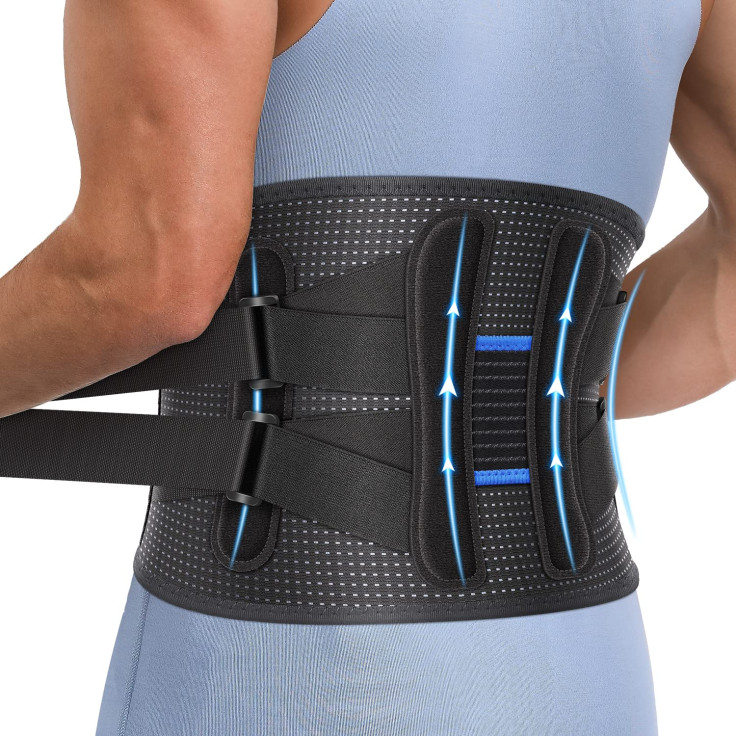The Sitting Epidemic: Tips How Remote Workers Can Protect Their Posture
Remote work has become increasingly relevant in the modern workforce, as technological advancements have made it easier for people to work from anywhere in the world. This flexibility has provided many benefits for both employers and employees, such as increased productivity, reduced commuting time and costs, and improved work-life balance.

However, with this shift to remote work, comes the challenge of extended periods of sitting. As more people work from home or other remote locations, they are required to sit for long hours at a time, which can have negative effects on posture and overall health.
In particular, prolonged sitting and poor posture can lead to physical discomfort and long-term health issues, such as chronic pain, spinal misalignment, and decreased mobility.
Therefore, it's crucial for remote workers to learn proper posture techniques and take steps to incorporate physical activity, science-based solutions, and ergonomic equipment into their daily routine. By making these adjustments, remote workers can avoid the negative consequences of prolonged sitting and enjoy the benefits of a healthy and comfortable work environment.
Here are some tips for remote workers protect their posture and overall health while sitting for extended periods of time:
Invest in ergonomic equipment
Consider investing in an ergonomic chair, desk, or keyboard. These products are designed to help support proper posture and can significantly reduce the risk of discomfort and pain associated with prolonged sitting.
Take frequent breaks
Set reminders to get up and stretch every hour or so.
Taking frequent breaks is an important strategy for protecting posture and overall health while working remotely. These breaks can help you prevent stiffness and tension, while incorporating simple stretches and movements can help relieve muscle tension and promote good posture.
More importantly, regular breaks can also help boost productivity and focus, improving overall well-being and work performance.

Maintain proper posture
Maintaining good posture while working remotely is essential for preventing physical discomfort and long-term health issues. Sit up straight with your shoulders back and feet flat on the ground to align your spine and reduce strain. You can make use of the ergonomic equipment to support good posture.
Adjust your screen height
Positioning your computer screen at eye level is an important aspect of maintaining good posture while working remotely.
When the screen is too low, it can cause neck strain as you constantly have to look down, leading to tension and pain in the neck and shoulders. Over time, this can even cause forward head posture, which can be difficult to correct. If the screen is at eye level, you can keep your neck and spine in a neutral position, reducing the strain on your muscles and joints.
This posture not only prevents discomfort but also promotes better breathing and circulation, which can increase focus and productivity. To achieve the correct screen height, you can use a laptop stand or an adjustable monitor arm.
Stay active
Do not forget to incorporate regular physical activity into your day, even if it's just a short walk around the block during your lunch break. Staying active can help improve posture, reduce stress, and promote overall health.
Consider using posture correctors
If you are struggling to maintain good posture despite your best efforts, consider using posture correctors. Posture correctors are devices designed to help align your spine and improve your posture. They work by gently pulling your shoulders back and holding them in a position that promotes good posture.
Some posture correctors also come with adjustable straps to ensure a comfortable fit. Using a posture corrector can help you maintain proper posture, even when sitting for long periods, by reminding you to sit up straight and avoid slouching.
Posture correctors can also provide relief from pain and discomfort caused by poor posture, such as back and neck pain. However, it is important to note that posture correctors should not be used as a substitute for regular exercise or stretching. Using posture correctors in conjunction with other posture-improving strategies, such as taking regular breaks and maintaining an ergonomic workspace, can be an effective way to promote good posture and prevent discomfort while working remotely.
Practice mindfulness
It's easy to get caught up in work and forget about our posture, but taking a few moments throughout the day to check in with your body and your posture can help you prevent chronic issues.
Mindful awareness involves paying attention to your body and your surroundings in the present moment. By bringing your attention to your body, you can identify areas of tension and discomfort and take action to correct them before they become chronic issues.
For example, you might notice that you tend to hunch forward when you're typing, or that you tend to cross your legs when you sit. By becoming aware of these habits, you can take steps to correct them, such as adjusting your chair or keyboard, or simply reminding yourself to sit up straight.
Mindful awareness can also help you identify other factors that may be contributing to poor posture, such as stress or fatigue, and take steps to address them.
Good posture is crucial for maintaining overall health and well-being. Whereas, poor posture can cause a host of physical issues, from muscle and joint pain to headaches and fatigue. Worse, it can also affect mental health by contributing to low self-esteem and reduced confidence.
It is understandable how remote workers who spend hours sitting in front of a computer, are especially at risk for developing poor posture. However, by incorporating simple habits like stated in this article, they can protect their posture and enjoy the many benefits of good health.
Remember, taking small steps to improve posture can make a big difference in the long run.



























